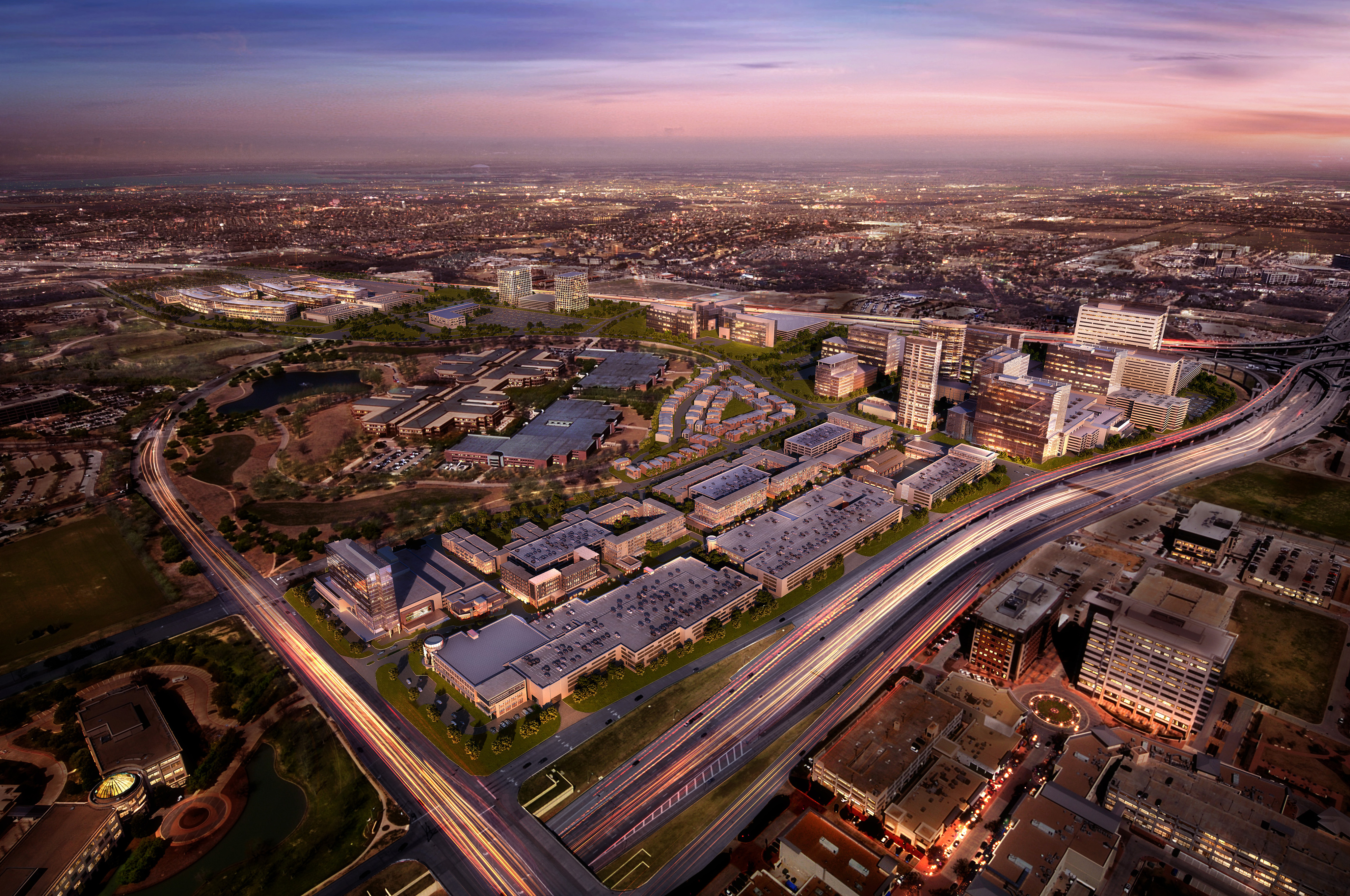
Last month I was asked by the private wealth team at Bank Of Texas in Plano to give a presentation on the general commercial real estate market in North Dallas. So, my first question was, “How do you define North Dallas?” It’s a valid question, because when I got started in the business, North Dallas ended, on the north, at Forest Lane.
Collectively, we decided the “new-new” geographic area we call North Dallas could be generally defined as being bounded by U.S. 75 (North Central Expressway) on the east, Interstate 35E on the west; Interstate 635 on the south, and, at this time, U.S. 380 on the north. When viewed on a map, this geographic area looks like a windshield-wiper swath, with its axis at the Dallas North Tollway and 635, the wiper goes east to Central, swings back west to I-35, topping out on the north at U.S. 380.
With this area in mind, and using data from CoStar, MPF, ERSI and citymaps.com, I culled together a few interesting factors about North Dallas and why it is, to many, the center of it all.
First, a look at its geography:
Size: Its size of 388 square miles includes three counties and 22 cities. Collectively, it ties with Bangkok as the 73rd largest “city” in the world.
Residents: With 1,090,426 residents in 413,802 households, its population would make it the 10th largest city in the U.S.
Composition: It’s about the same as country as a whole, except younger; the average age is 35.4 years vs. 38.0 years, respectively.
Density: It’s relatively low for an urban area, at 2,810 people per square mile. Chicago’s density is is 3,855 people per mile, and Seoul, Korea, tops out at 43,250 per mile.
Second, the impressive demographics of North Dallas.
Income: Median household income of $81,486—more than 50 percent higher than the U.S. overall; additionally, 41 percent make $100,000 per year or more, compared to only 24 percent in the U.S. The per capita income in North Dallas of $40,786 would place it in the top 25 cities in the U.S.
Employment: 29 percent in North Dallas are employed in the “business professional” category, compared to only 17 percent in the U.S. as a whole. That’s why the incomes are so high.
Educational Attainment: Again, this is where we shine. Fifty-eight percent have an Associate Degree or higher, compared to only 17 percent in the U.S. That’s why companies kept moving here and why people make more money in North Dallas. As the saying goes, “ The more you learn, the more you earn.”
Consumer Spending: On average, North Dallas households spend 30 percent to 40 percent more than the U.S. average—on just about everything. (This makes sense, as they also earn more.)
Wealth: In terms of asset values, the same is true: The value of household assets is 30 percent to 40 percent higher in North Dallas than the national average.
Third, housing is cheap, relatively speaking.
Home affordability: The median home in Dallas is priced at about three times median household income, compared to 3.7 times in the U.S. overall. In some of those California cities we’re seeing a lot of migration from, the multiplier tells the story. (Note: It is hard to qualify for a home mortgage when this ratio exceeds 4.0.)
Torrance (Toyota): 8.4 times
San Jose: 7.5 times
Los Angeles County: 8.8 times
San Francisco: 10.4 times
Multifamily Rents: Apartments are also a bargain relatively speaking. The average is $1,138 per month in North Dallas. Compare that to some of the California cities: San Francisco ($3,420), Oakland ($2,210), San Jose ($2,190), and Los Angeles ($2,010). And these numbers are for one-bedroom units only.
Fourth, a snapshot of the North Dallas commercial real estate market, and some quick facts about its size and overall health:
So, what does all this mean in terms of North Dallas commercial real estate? First, it’s big, healthy, and rapidly expanding market. Secondly, companies like to locate near a well educated, above average wage-earning and relatively young population. Affordable housing is a must—and a plus—when relocating employees from a location where there’s a higher cost of living. The result of this locational desirability is a very healthy commercial real estate market.
Looking through my front windshield, the road looks straight and clear for North Dallas, at least into the foreseeable future—especially if you are driving east, from California.
Chuck Dannis is senior managing director of National Valuation Consultants Inc. in Dallas.






